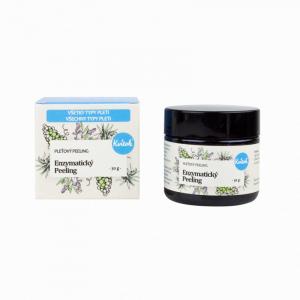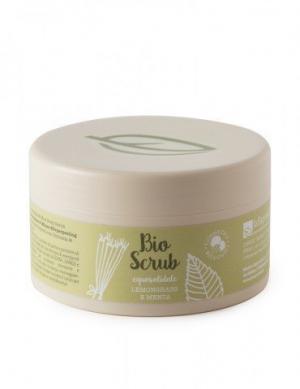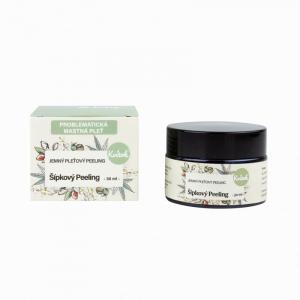
Try a chemical peel at home and rejuvenate

Chemical Peeling at Home
Nowadays, more and more people are interested in professional skin treatments that can be done in the comfort of their own home. One of the most popular trends in home skincare is chemical peeling. This type of peel can not only regenerate and rejuvenate your skin but also bring professional results if done correctly. But what are the benefits and risks of this procedure, and what should you watch out for to avoid harming yourself at home?
What is a chemical peel and how does it work?
A chemical peel is a method that uses various types of acids to remove dead cells from the skin's surface. The acids gently disrupt the outer layers of the skin, stimulating regeneration and the formation of new cells. This process results in smoother, softer, and more radiant skin. Additionally, peeling helps reduce the appearance of pigmentation spots, alleviates acne, and smooths fine lines.
Although chemical peels are usually performed in beauty salons or by dermatologists, there is an option to perform chemical peels at home using products available on the market. These products are designed to be safe for home use, but it's essential to apply them correctly to avoid potential complications.
Choosing the right peel for home use
There are several types of acids used in chemical peels. Each type of acid has a different effect on the skin, so it's important to choose the right one based on your skin type and its needs.
- AHA acids (alpha-hydroxy acids) are great for dry and mature skin. They help hydrate and smooth fine lines. They are also ideal for removing pigmentation spots.
- BHA acids (beta-hydroxy acids) are fat-soluble and penetrate deeper into the pores. Therefore, they are suitable for oily skin and acne-prone skin because they help remove excess oil and fight inflammation.
- PHA acids (poly-hydroxy acids) are a gentler alternative to AHA acids. They are suitable for sensitive skin as they act more gently and cause less irritation.
Regardless of which acid you choose, the important thing is to follow the correct procedure and use a product that matches your skin type. A chemical peel can be safe and effective even at home if you follow the instructions and know how to proceed.
How to prepare for a chemical peel at home?
Before you proceed with a chemical peel at home, it's necessary to prepare your skin and follow several crucial steps that will help prevent irritation and achieve the best results.
-
Clean skin is essential. Before applying the peel, thoroughly wash your face with a gentle cleanser to remove all impurities and oils. Carefully dry the skin so it's completely dry before applying the acid.
-
Avoid exfoliation before peeling. Several days before the planned chemical peel, avoid using other exfoliants or strong active ingredients, such as retinoids. Your skin could become too sensitive, and the peel might cause irritation or even damage.
-
Protect yourself from the sun. Avoid excessive sun exposure before and after the peel. A chemical peel can increase the skin's sensitivity to UV rays, which could lead to pigmentation spots or burns.
How to perform a chemical peel at home?
A chemical peel at home should be conducted according to the exact instructions on the chosen product. Most home peels are designed for simple and safe use. Nevertheless, it is crucial to follow the instructions meticulously.
Try our natural products
-
Application of the peel: Apply the peel gently using your fingers or the provided applicator, evenly across your entire face. Avoid sensitive areas such as the eyes, lips, and the area around the nose.
-
Duration of effect: Leave the peel on according to the manufacturer's recommendations, usually for a few minutes. During this time, you may feel a slight tingling or mild burning, which is normal. However, if you experience strong irritation or burning, rinse off the peel immediately.
-
Rinsing: After the specified time, thoroughly rinse your face with cold water and gently dry with a towel. Avoid using rough towels to prevent irritation.
Care after a chemical peel
After a home chemical peel, your skin is more sensitive than usual, so it's important to protect and hydrate it. Immediately after the peel, apply a moisturizing cream, ideally containing ingredients like hyaluronic acid or ceramides, which support skin regeneration.
Also, remember to use sunscreen with high SPF, even in winter or on cloudy days. Sun rays can easily damage freshly treated skin, which could lead to hyperpigmentation.
Advantages and disadvantages
Performing a chemical peel at home has several advantages. Besides saving time and money, it gives you control over when and how often you perform the peel. Additionally, you have the option to choose from a wide range of products that best suit your skin's needs.
On the other hand, it's important to remember the risks if the peel is not done correctly. Incorrect application or inappropriate product choice can cause irritation, dry skin, or even burns. Therefore, it's always good to start with gentler products and gradually increase their intensity if your skin responds well.
A chemical peel at home can be an excellent choice for those who want to improve their skin's quality and achieve a fresh and youthful appearance without having to visit beauty salons. Peeling helps address various skin issues, from acne to wrinkles, but requires careful preparation and proper care after application. If you follow the recommended procedures and take care of your skin, you can enjoy professional care at home that delivers visible results.






